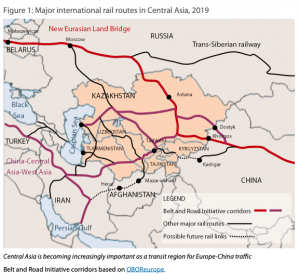Author: PBEC subject matter expert contributor, Dr. Yu Hong, Senior Research Fellow of the East Asian Institute at NUS in Singapore who also spoke at our Dialogues Summit 2021 shares his latest paper and insights with us on this topical area of trade and regional developments.
Abstract

Central Asia is a priority region for China’s foreign policy under the BRI. BRI implementation has helped to expand China’s economic interests and influence in Central Asia. However, China’s push for the BRI implementation is China-centric, rather than a credible multilateral endeavour as claimed by the Chinese government. As shown in the case of Central Asia, the BRI involves a series of bilateral deals. There is no multilateral decision-making process involved in overseeing BRI or making investment decisions.

